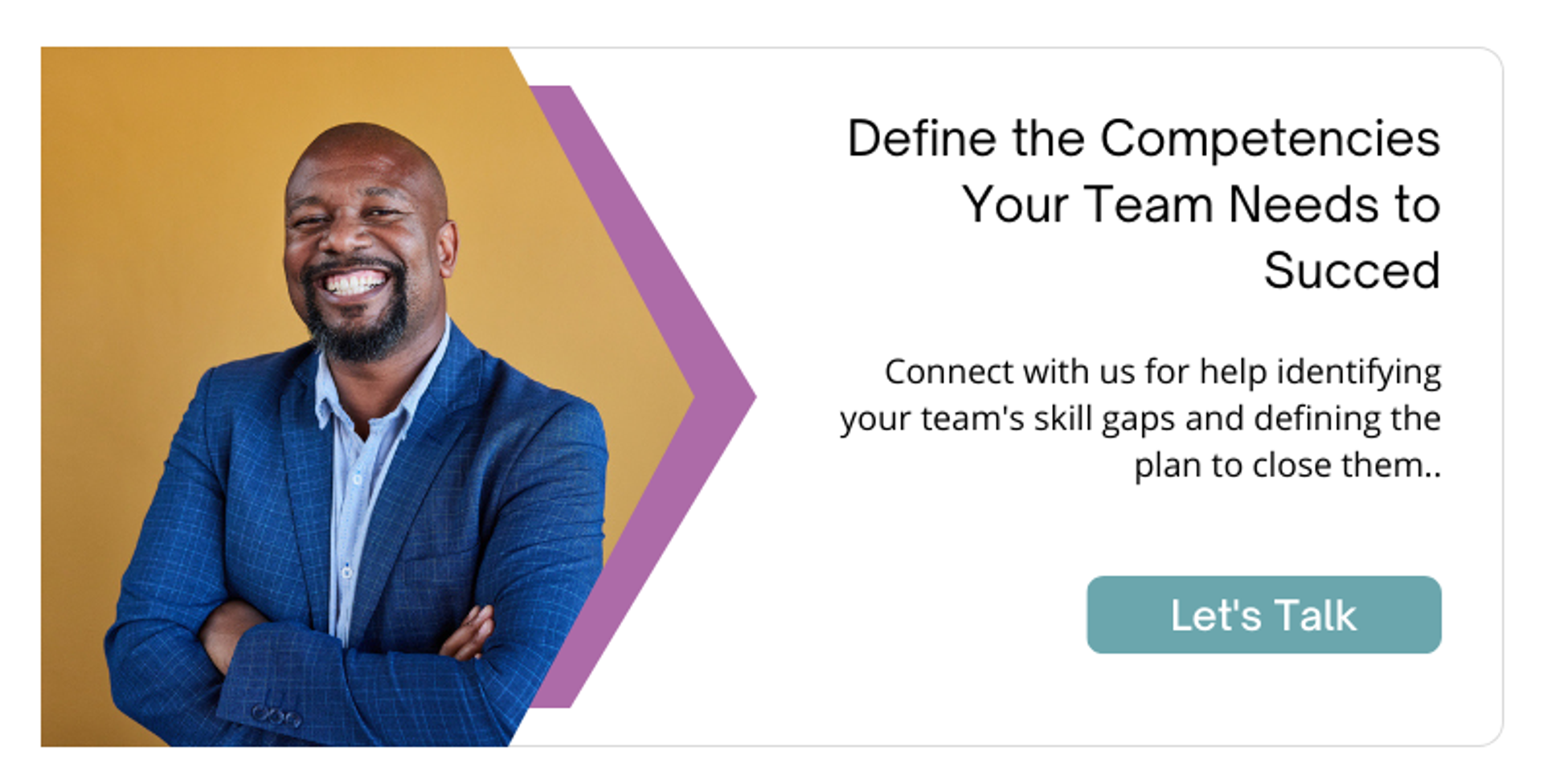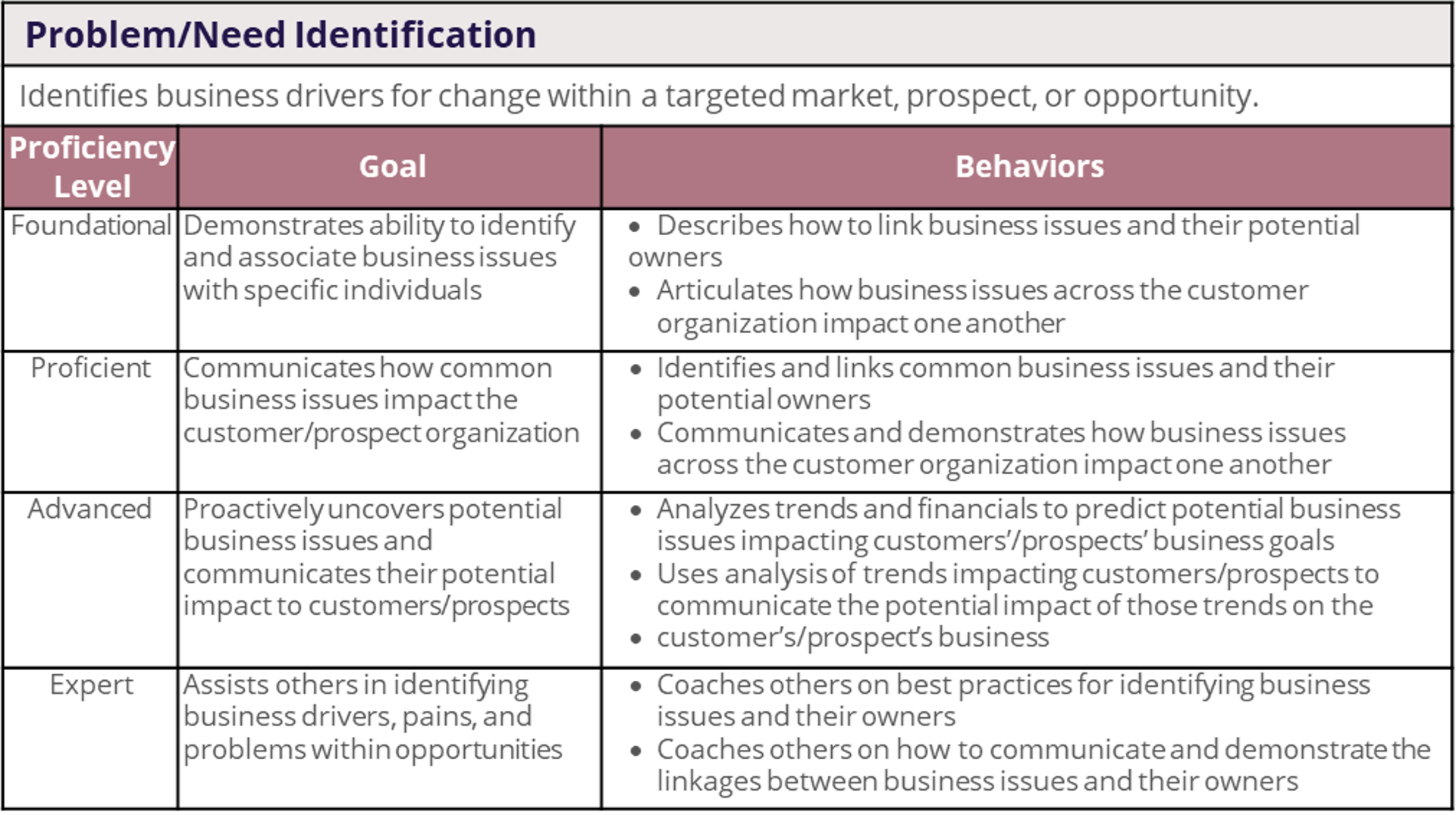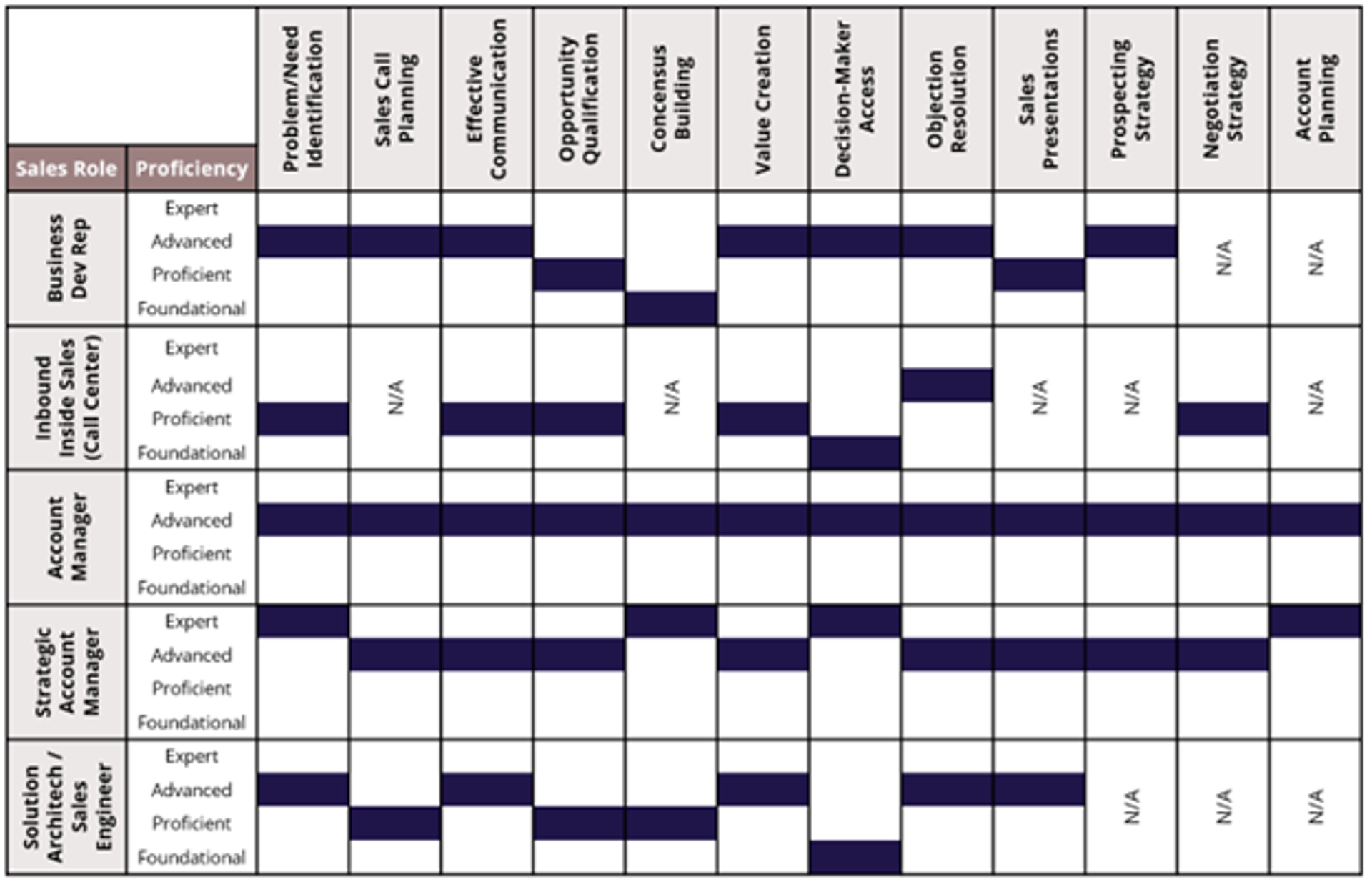Defining a Sales Competency Framework to Drive Top Performer Behavior
Sales enablement

Maximize Your Sales Competency Framework
In every sales role, some people perform more effectively than others. Outstanding performers do their jobs differently and possess different levels of proficiency than average performers. A great way to maximize your sales enablement investment is by creating a sales competency framework to help focus your efforts on the behaviors of top performers. A good sales competency framework will help you to define what good looks like for each role, assess gaps in capabilities, guide learning journeys, and provide a powerful tool for coaching.
So, what is a competency framework?
A sales competency framework is a set of competencies per role that provide a combination of knowledge and skills which are reflected in job behaviors that can be observed, measured, and evaluated.
Here are a few best practices to ensure you get the most out of your sales competency framework.

Focus on Sales Specific Competencies
When determining what competencies, you want to include, be sure to stick to sales-specific competencies rather than dispositional factors such as accountability, work ethic, or initiative. While these may be important things to uncover in an interview they are not easily developed and therefore should not be the basis of your framework.
As you identify sales competencies you will want to ensure that you create the following items for each:
- Definition – a short 1-2 sentence definition that describes what that competency means. Doing this will help you to ensure that each competency is truly unique.
- Proficiency Levels – identify a level of mastery of a competency. Proficiency levels are incremental and additive, meaning that anyone level is inclusive of all other preceding levels. We will discuss proficiency levels further later.
- Goals – should describe the underlying intent of each proficiency level. The goal provides context to understand the different behavioral levels of the scale
- Behaviors – a list of behaviors for each proficiency level that highlight best practices for applying the competency in real-life situations. This should not be an exhaustive list of behaviors but should provide important contributors to predicting outstanding performance.

Find out which sales competencies drive success by downloading the brief: Sales Capabilities Required to Compete Today
Identify the Proficiency Level of Competencies for Each Sales Role
Once you have identified all of your competencies, the next step is to determine which competencies apply to which sales roles. When thinking of sales roles, you should base it on the objectives of the role and not on a job title. In working with large global organizations, they may have 75 sales-related job titles, but as we dig deeper, we find there are only 9 unique sales roles. This will make the process more manageable.
While many of the sales roles will require multiple overlapping competencies the proficiency in which these are required will vary. How you define your proficiency levels is up to you. It could be as simple as weak, moderate, or strong.
Here is an example for illustration:
- Foundational – understands the basic concepts of the competency
- Proficient – able to execute the competency in certain sales situations; typically, simple sales situations
- Advanced – able to consistently execute across a wide range of sales situations, including those with complexity and as a result are experiencing positive outcomes
- Expert – capable of teaching others how to improve their execution of the competency; often seen as an expert on the competency by their peers

If we look at the Consensus Building competency in the example, we can see how this plays out per role:
- Inbound Call Center Sales – this competency doesn’t apply to them because they deal with a one-call close.
- Business Development Rep – needs to understand the importance of consensus-building which may lead them to try and uncover who all will be involved in the decision-making process, but they will be passing off the lead and will not actually have to apply this in their role.
- Solution Architect – needs to apply this behavior by ensuring that it is clear how each stakeholder on the prospect side can benefit from your solution and the technical steps needed from each. This knowledge can be used to tailor demos to align with the needs of the audience and identify important actions as a next step.
- Account Manager – will need to be able to consistently identify key stakeholders, and plan and execute activities to align them to take action across opportunities of varying complexity.
- Strategic Account Manager – not only is able to understand the interdependency across stakeholders to plan and execute in aligning them into action, but they must also be able to help coach others on the account team to support them in this effort. Their ability to get the full account team to help in listening for signs of misalignment or offering up key action items to reach a decision will be critical to the overall success of the account.

Sales Capability Framework
Richardson helps teams develop diverse selling capabilities enabling sales professionals to stay agile and adaptable amidst market changes and increasing customer demands. Richardson’s Sales Capability Framework is a complete collection of 15 sales capabilities supported by 55 sales behaviors that sellers must master to enhance commercial selling competitiveness.
Learn MoreMap Learning Assets to Competencies
To put your competency framework into action the next step is to map your learning assets to the competencies. This will help you to determine where you have gaps in which content will need to be created in-house or acquired from a third party.
Not every competency is equal, and some will require more extensive learning and application to reach mastery. People learn in different ways so having a variety of assets and modalities for your content will be important. With all the various types of technology, the types of learning assets to consider should go beyond traditional instructor-led and online training courses in an LMS. You should consider tips, traps, videos, tools, blog posts, white papers, etc.
Here are a few key use cases to consider:
- Assigned Learning – focused skill development provided through instructor-led training or online training courses
- On-Demand – continual learning that can be accessed by sellers as needed or for managers to utilize for individual skill development
- Personalized Reinforcement – adaptive reminders and tips for applying knowledge learned
- Point in Time Performance Support – proactive guidance on real deals providing learning in the flow of work
With AI and machine learning solutions the possibilities are endless.
As you build out your sales competency framework remember to focus on sales-related competencies, identify the proficiency level of competencies for each sales role, and map learning assets to each competency. Incorporate these competency framework best practices to drive top performer behavior across your sales organization.

Brief: Multi-Role Sales Training Curriculum
Learn how to build the right selling skills for every role in your sales organization.
DownloadGet industry insights and stay up to date, subscribe to our newsletter.
Joining our community gives you access to weekly thought leadership to help guide your planning for a training initiative, inform your sales strategy, and most importantly, improve your team's performance.






